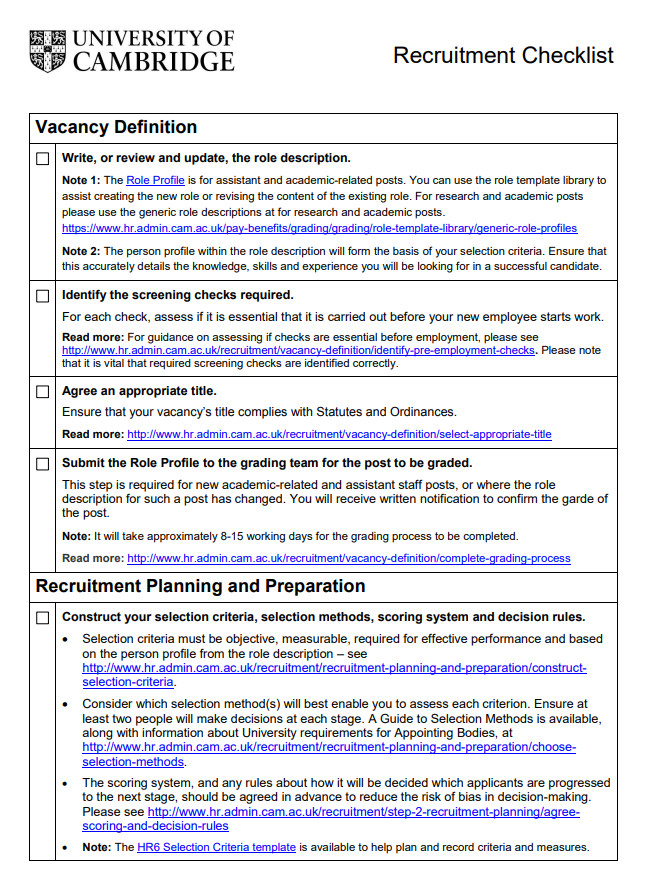
Recruiting new employees can be a daunting task for any business, big or small. It involves a lot of moving parts, from sourcing candidates to conducting interviews and making final decisions. To help streamline the process and ensure nothing falls through the cracks, many hiring managers and HR professionals rely on a recruiting checklist.
In this article, we will delve into the world of recruiting checklists, exploring what they are, why they are important, and how to create an effective one for your organization.
What is a Recruiting Checklist?
A recruiting checklist is a tool used by hiring teams to keep track of the various steps involved in the recruitment process. It serves as a roadmap, outlining all the tasks that need to be completed from the initial job posting to the final offer letter.
By having a checklist in place, recruiters can ensure that no important steps are missed, leading to a more efficient and organized hiring process.
Why Use a Recruiting Checklist?
There are several reasons why using a recruiting checklist can benefit your organization.
- Firstly, it helps to standardize the recruitment process, ensuring that all candidates are evaluated using the same criteria. This can help to eliminate bias and promote fairness in hiring decisions.
- Additionally, a checklist can help to streamline communication between team members, as everyone is on the same page about the status of each candidate.
- Finally, a recruiting checklist can help reduce the likelihood of mistakes or oversights, leading to a more successful hiring outcome.
How to Create a Recruiting Checklist
Creating a recruiting checklist is a straightforward process that can be customized to suit the specific needs of your organization. Here are some steps to follow:
- Identify the key stages of the recruitment process: Start by breaking down the recruitment process into its key components, such as sourcing candidates, conducting interviews, and making job offers.
- Define the tasks for each stage: For each stage, outline the specific tasks that need to be completed, such as posting job ads, scheduling interviews, and checking references.
- Set deadlines: Assign deadlines to each task to ensure that the recruitment process stays on track.
- Assign responsibilities: Clearly define who is responsible for each task to avoid confusion and ensure accountability.
- Review and adjust: Regularly review and update your checklist to reflect any changes in your recruitment process or organizational needs.
Examples of Recruiting Checklists
There are many resources available online that provide templates for recruiting checklists. These templates can serve as a starting point for creating your customized checklist. Here are a few examples of common tasks that might be included in a recruiting checklist:
- Post a job ad on relevant platforms. This task involves creating and posting job ads on job boards, company websites, and social media platforms.
- Review resumes. Recruiters need to review resumes to identify qualified candidates for further consideration.
- Schedule interviews. Coordinating interview schedules with candidates and hiring managers is a crucial step in the recruitment process.
- Conduct reference checks. Checking references helps to verify the qualifications and experience of potential hires.
- Make a job offer. Once a candidate has been selected, a job offer must be extended and negotiated.
- Complete onboarding process. The onboarding process involves welcoming and integrating new employees into the organization.
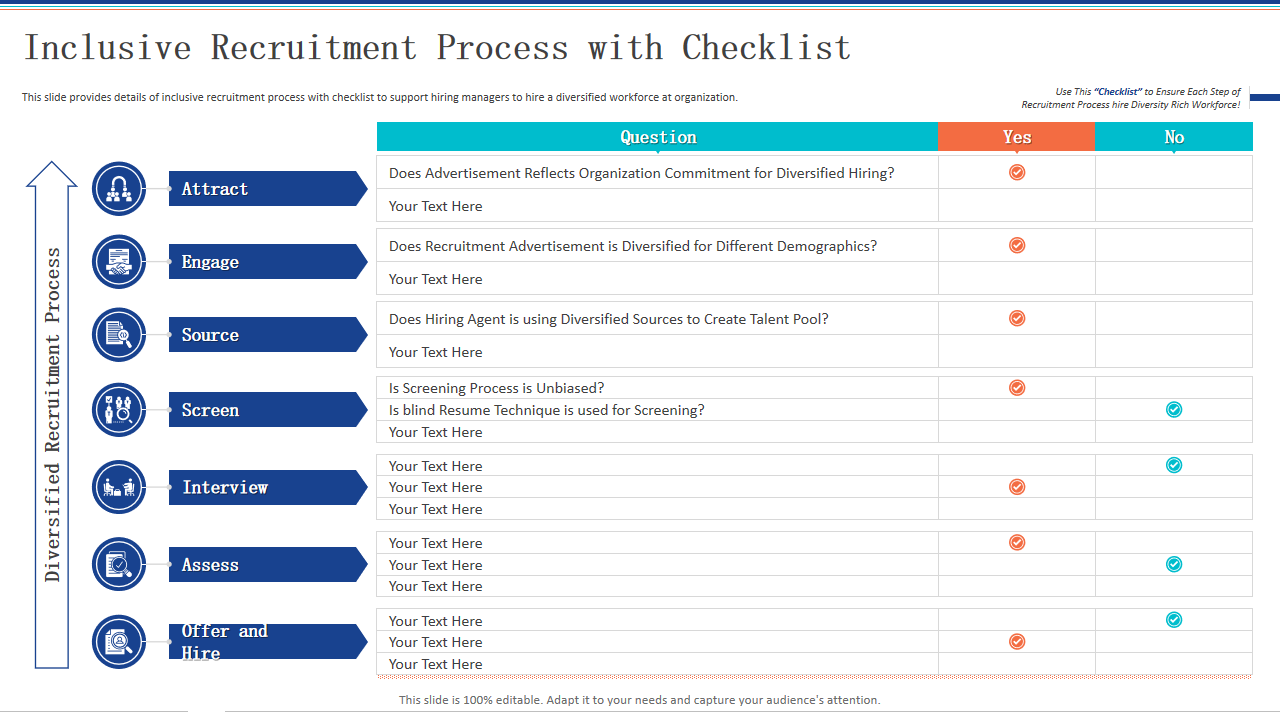
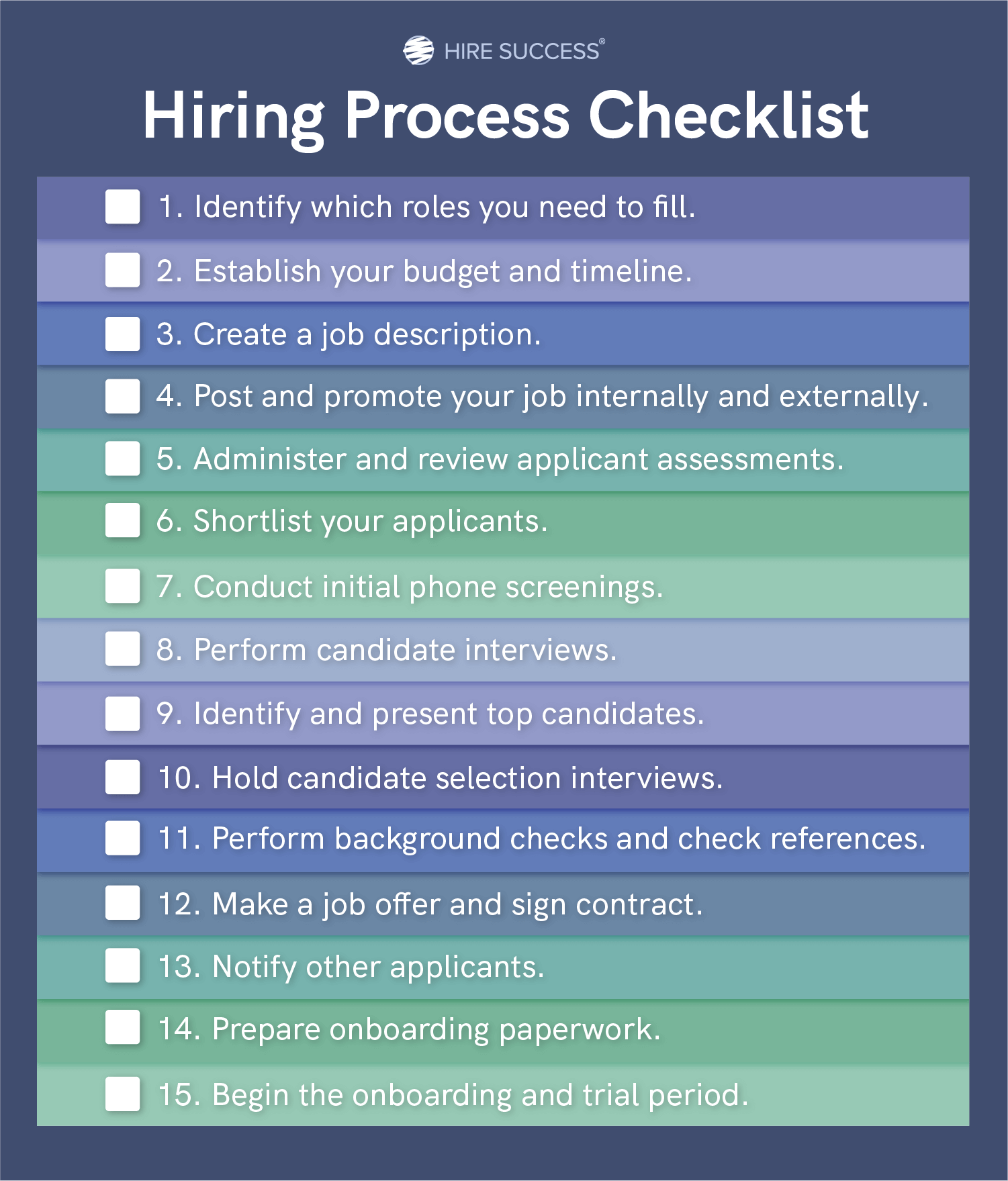
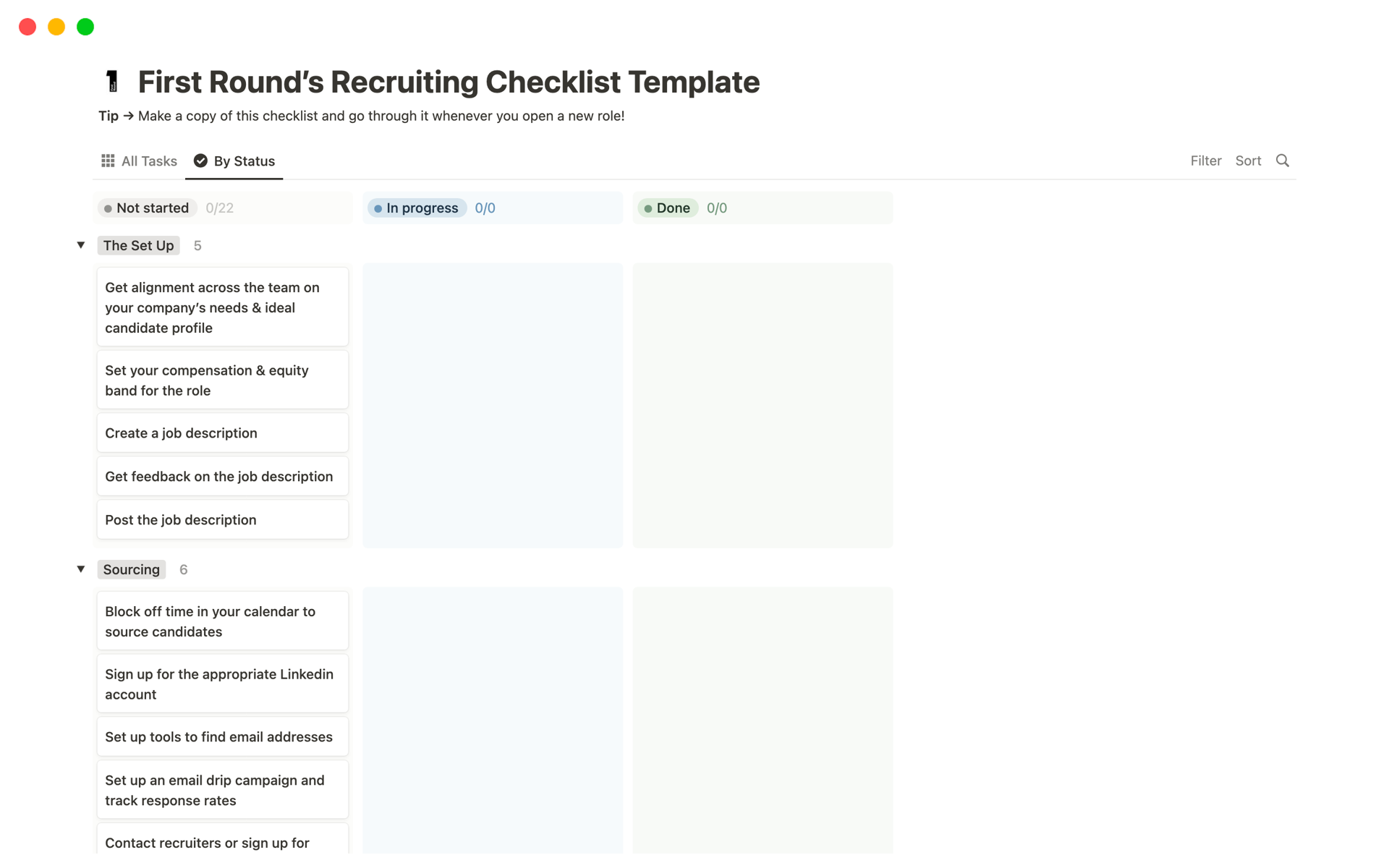
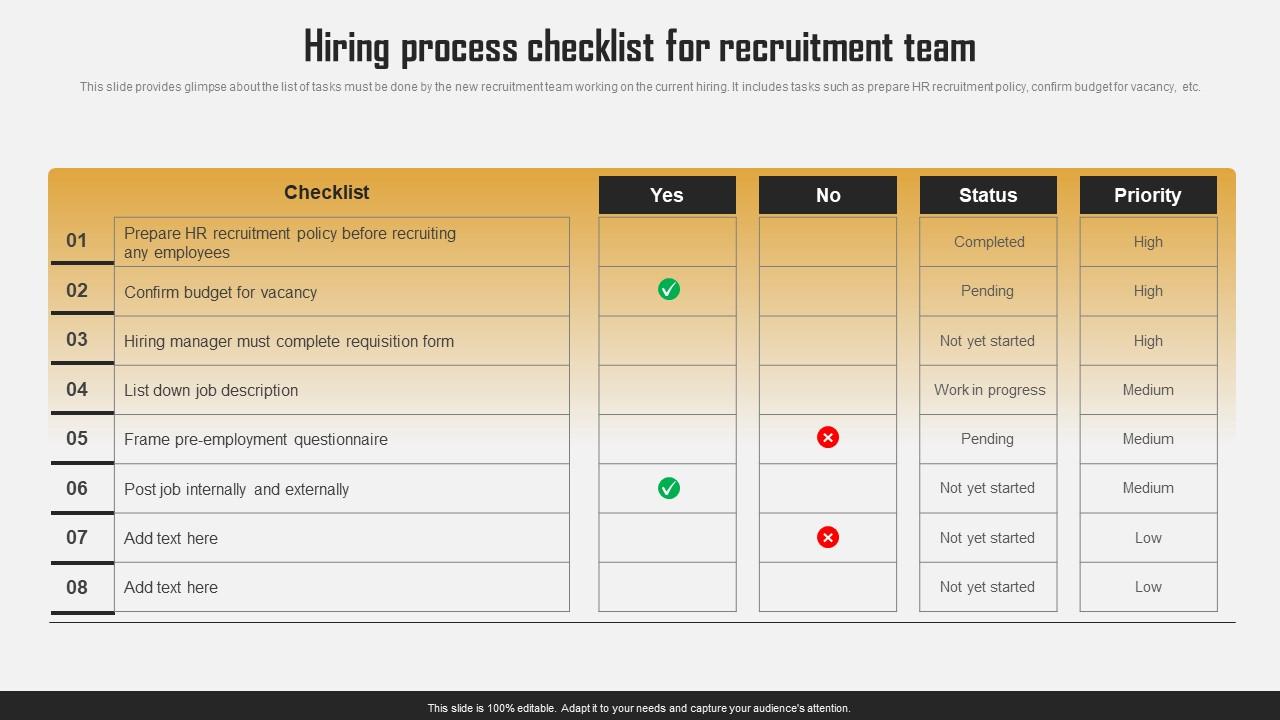
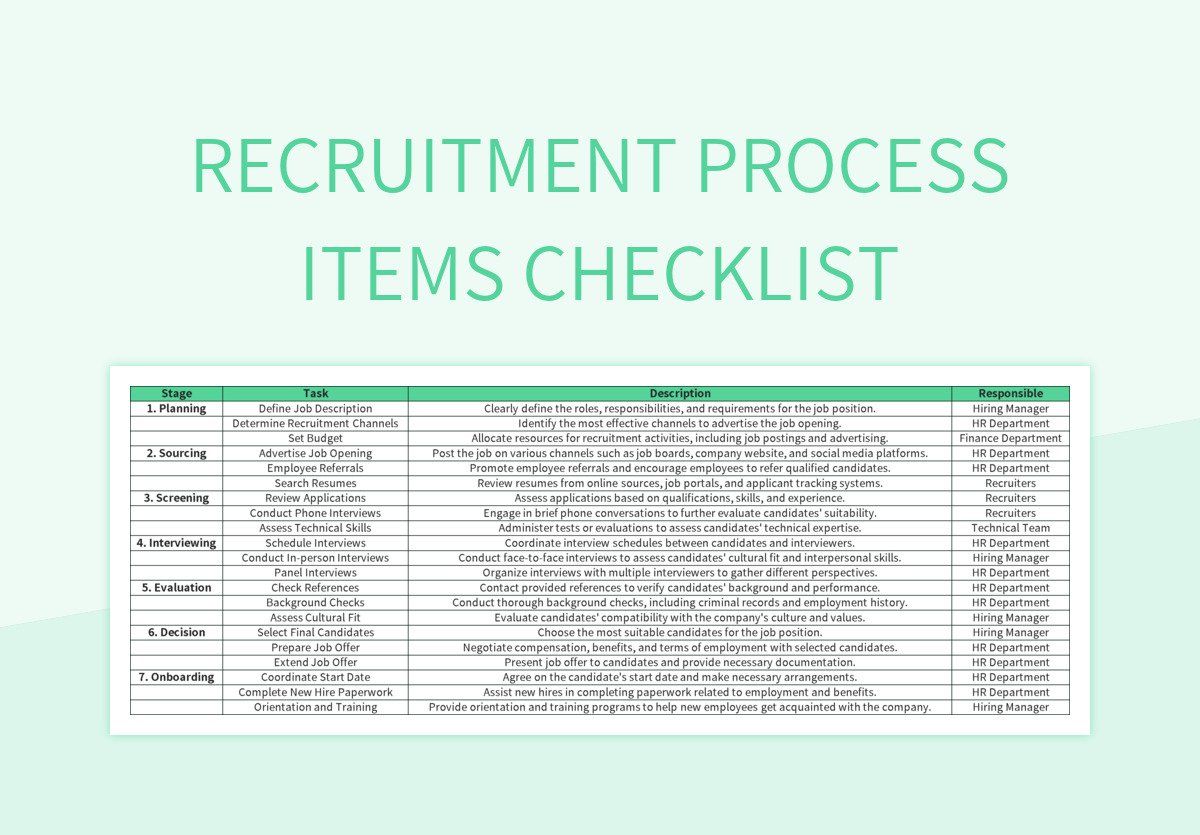
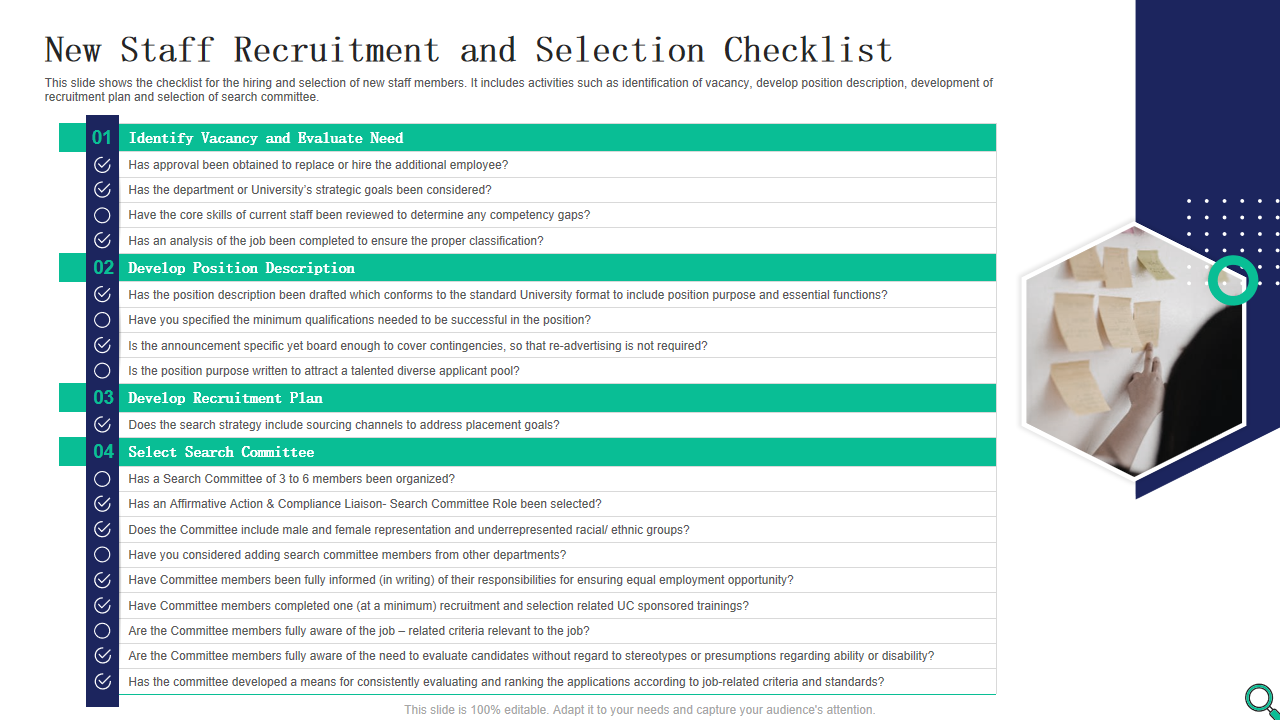
Tips for Successful Recruiting Checklist Implementation
Implementing a recruiting checklist can greatly improve the efficiency and effectiveness of your recruitment process. Here are some tips to help you get the most out of your checklist:
- Communicate with your team: Make sure that all team members are aware of the checklist and understand their responsibilities.
- Regularly update the checklist: As your recruitment process evolves, be sure to update your checklist to reflect any changes.
- Seek feedback: Ask for feedback from team members and candidates to identify areas for improvement in your recruitment process.
- Use technology: Consider using recruitment software or applicant tracking systems to automate and streamline the recruitment process.
- Stay organized: Keep all recruitment documents and information in one central location to avoid confusion and ensure easy access.
In Conclusion
Recruiting checklists are valuable tools that can help organizations streamline their recruitment processes and make more informed hiring decisions. By creating a customized checklist that aligns with your organization’s needs and values, you can ensure that your recruitment process is efficient, fair, and successful. Remember to regularly review and update your checklist to keep it relevant and effective in an ever-changing hiring landscape.
Recruiting Checklist Template – Download
- Free Printable Exercise Planning Template - November 24, 2025
- Free Executive Summary Template (Word) - November 20, 2025
- Free Executive Resume Template (Word) - November 20, 2025